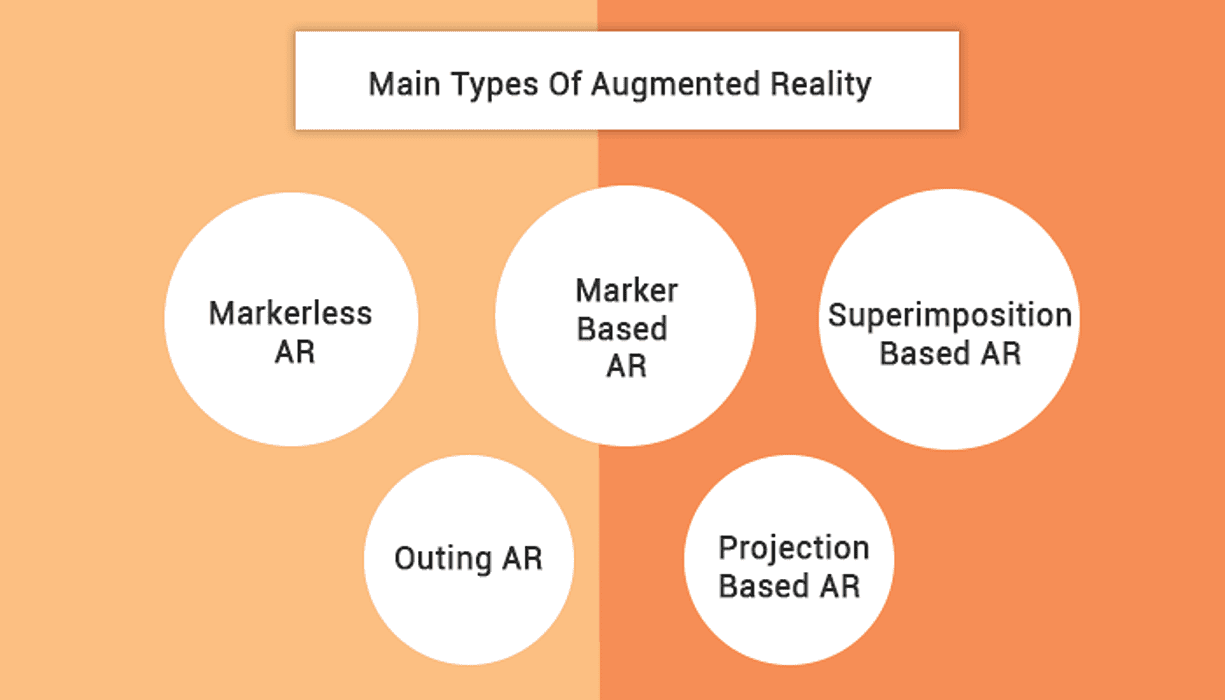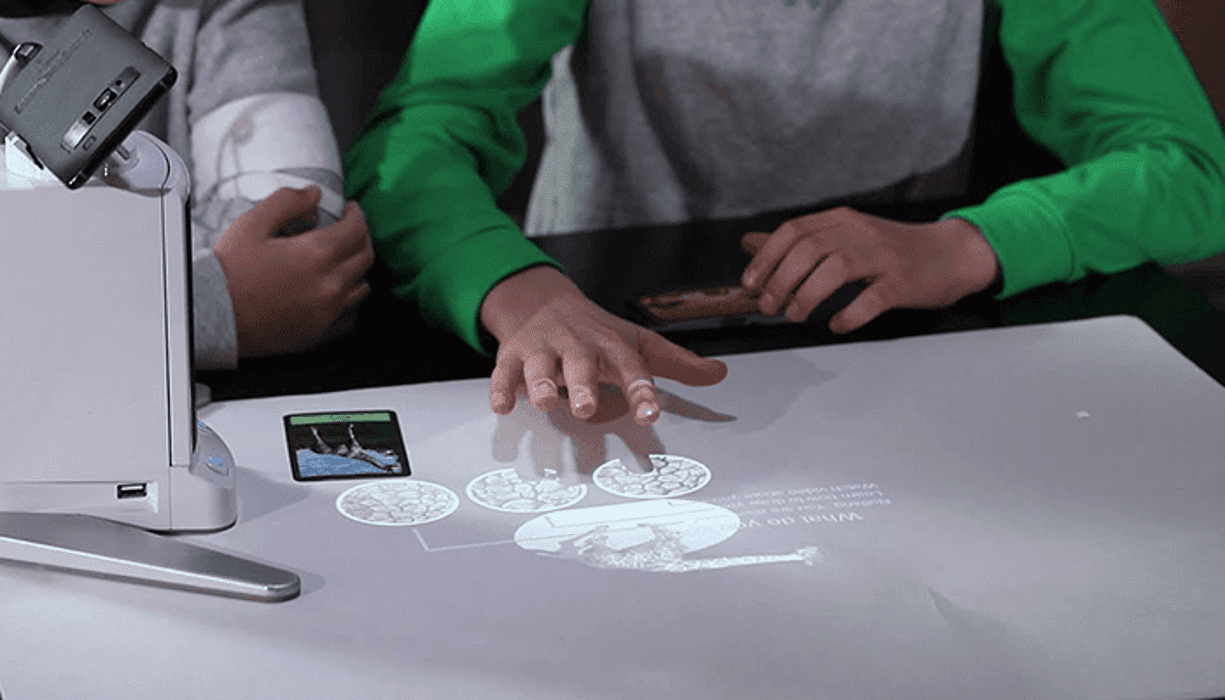
Nowadays, we have seen a lot of involvement with the Augmented Reality technology in our lives. There's no doubt that this AR technology has been contributing a lot in implementing simple tasks as well as the complex ones like adding animation in social media filters and assisting in performing medical surgical procedures.
So, get ready to read about some of the most interesting insights on a trending technology i.e., Augmented Reality!
What is Augmented Reality?
The term AR stands for Augmented Reality and can be defined as the process of integration of digital data or information with an actual reality-based environment in real-time.
When it comes to the concept of augmented reality, many people tend to confuse it with the concept of VR that stands for Virtual Reality. But AR and VR are different technologies that work on separate concepts. For example, in VR, a completely different environment is created artificially.
But in augmented reality, new information is overlayed on top of the already existing real environment, and this is the main difference between virtual reality and augmented reality.
History of AR
The term 'Augmented Reality' was first coined by Thomas Caudell, a Boeing Researcher in the year 1990. According to him, Augmented Reality is the appropriate term to describe the head-mounted displays that were used by electricians while they worked on complicated wiring harnesses.
In the year 1998, we were able to witness the first commercial application of augmented reality, which was during the football games to display a broad yellow line known as 'Touchdown' line in the stadium field.

Since then, we sure have come a long way in the field of Augmented Reality as now we have AR Headsets as well as glasses that portray excellent usage of the augmented reality technology in our day-to-day life.
Today the AR applications are written in special three-dimensional programs with which the developer can combine the digital information in the program to a specific environment in the real world. This digital information can be both in the form of context, or it can also be in the form of animation.
Let's know why the augmented reality products are in such a huge demand from various industries like Marketing, Healthcare, Travel & Tourism, and many more. But first, we need to know how AR works.
How Does AR Actually Work?
The working of Augmented Reality is based on the main objective of superimposing digital elements like audio, graphics, images, etc. on top of a real-world environment, the emphasizing part here is that it is done in 'Real Time'.

Many people mix it with the concept of Graphics, but that's not true as Augmented Reality uses different components to implement this whole process. These are the four basic components that are required to accomplish AR, which are:
- Sensors and Cameras: The cameras and sensors are the basic components that are used for storing and also collecting information regarding the user's interactions and then sending it for processing purposes. These are the most critical components as they scan the surroundings of the environment for locating the physical objects, and then based on the collected data, the three-dimensional models are created. For example, a smartphone camera.
- A Processor: To make the procedure of augmented reality work, you will need a processor that can basically behave like a computer. Today, the smartphone itself fulfills this criterion as it consists of a CPU, Flash Memory, RAM, GPS, WiFi, and all other features that are required. We need these features to monitor the angle, direction, and speed of different elements that will be processed using AR.
- A Projector: Now that the data is processed, we will need something to project that particular processed data. The next component is a small projector that will be used to project the digital information on a surface. Some examples of these kinds of projectors are AR Headsets, AR glasses, and smartphones with Augmented Reality mobile apps.
- A Mirror: The key objective of using a mirror is to use the laws of reflection to achieve a proper image alignment with the AR products. Basically, the augmented reality devices use a mirror or a structure of mirrors made by combining curved mirrors for assisting the user's eyes by reflecting the light from the camera onto the surface.
What Are the Types of Augmented Reality?
As we know that the Augmented Reality applications are written in 3D programs to tie the digital content onto an Augmented Reality marker existing in the real world. It's time we take a look at the main types of augmented reality:

1. Markerless Augmented Reality
The first type of AR is the Markerless type, which is also referred to as a Position-based Augmented Reality. Because it is based on the location, several elements like a compass, GPS, accelerometer, etc. are used in determining the user's location and other details related to it.
So, with the help of features like gyroscope and GPS, you will get data based on a specific area or location. And now that we have smartphones at our service, this whole process becomes easier to implement with the help of maps and direct navigation.
2. Marker-Based AR
The marker-based augmented reality type is also known as the type which operates like the process of 'Image Recognition.' This is because it needs a special camera with a visual object for scanning purposes.

In a few cases, this device may also require to calculate the accurate positioning along with the orientation of the 'Marker' with respect to the digital information. Once the position is calculated correctly, then the marker will be able to display the animated content to the user.
3. Superimposition-Based Augmented Reality
As the name suggests, in this type of augmented reality, the objects are superimposed on the real-time environment by replacing the original view with digital content. It can be replaced completely or partially.
In superimposition-based type, object recognition played a major role. Let's understand it with an example of a famous application that is IKEA Catalog, where the user can see if a particular piece of furniture will look good in their house or not, with the help of this concept.
4. Outlining Augmented Reality
The outlining type uses the concept of object recognition as well, but it combines with the projection-based technique. This type is much easier to explain with a practical example i.e., suppose the user wants to park his/her vehicle. Still, due to darkness or any other factor, the user is facing difficulty in parking the vehicle correctly.

Then this outlining type will help the user in recognizing the road lines and boundaries around the vehicle so that he/she can park their vehicle in the correct position.
5. Projection-Based AR
The projection-based type is another widely known type of this advanced technology where the augmented reality device projects a synthetic light on a surface. This projection can be interactive as well as non-interactive in nature.

For example, a display of keyword will be considered as an interactive display if the user can use its functions through the display. But the display will be considered as noninteractive if the user can not perform any action using the projected display.
These are the five main categories of augmented reality technology. Although the markerless augmented reality type is the most widely used type, but all the types hold significance as well, they are now being researched for other applications.
6. Working Approach of AR
When it comes to the working part of the augmented reality technology, we have already presented stated the basic components that are required in the process. But there are approaches to take the process ahead, and one of the main approaches is SLAM.

7. SLAM
The term SLAM is short for Simultaneous Localization and Mapping, which has also be known as the best way to render the virtual images over the objects from the real world in real-time. This approach is also efficient in solving complex, augmented reality problems.
Unlike other approaches (Project-based and Location-based), the SLAM approach is known to consist of a set of algorithms that makes it so efficient in solving the localization and mapping issues.
Devices that Support AR
1. Smart TVs and PCs
Other devices that support augmented reality are smart TVs and advanced PCs. The input can be taken via a webcam, and then it can be easily manipulated by a tracker in front of the screen. But the issue that arises here is the availability of augmented reality apps, which is very less in comparison to the smartphone ones.
2. Smartphones
Devices like mobile phones and tablets support AR as well and are used by a majority of people who want to experience the world of Augmented Reality. In smartphones, the camera or location-based services are used to provide input into the device and the output will be displayed on the screen of the smartphone as well.
A large number of Augmented Reality apps are available in Google Play Store and Apple App Store for smartphones.
3. Smart Glasses
Smart Glasses are one of the futuristic gadgets that the people are super excited about and when the smart glasses supporting augmented reality hit the market, the game was changed. Here are some of the best Augmented Reality supporting smart glasses in the market:
- Vuzix Blade AR
- Everysight Raptor
- SmartEyeGlass
- Snap Spectacles 2.0 and many more
4. Augmented Reality Headsets
An AR Headset, a.k.a the Augmented Reality Headset, is a specialized device that allows the user to experience a simulated virtual environment with the help of an optic display lens. With this device, the end-user is able to see the digital content as well as the real-world together.

These are the devices that support the augmented reality technology and will help you in experiencing a journey like never before.
With the rise of Augmented Reality, there will be a high demand in augmented reality application development as well. So, keep an eye on the news section of MobileAppDaily to know about the latest AR app release.
To stay up-to-date with the innovation in augmented reality and latest augmented reality-based news in various other industry verticals including Healthcare, Entertainment, Travel, Transport, Education, Lifestyle, and many more. Just click on that ‘Subscribe’ button, so that you get notified every time we post about Augmented Reality.















